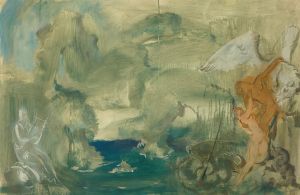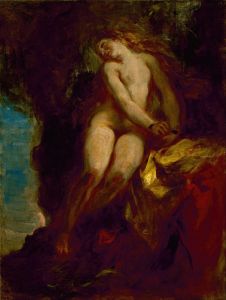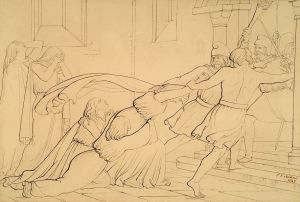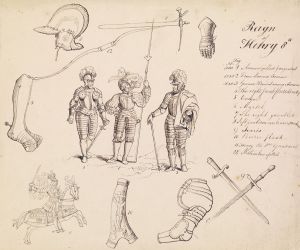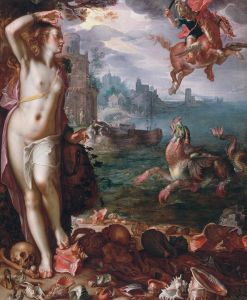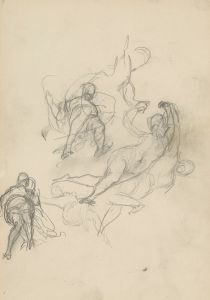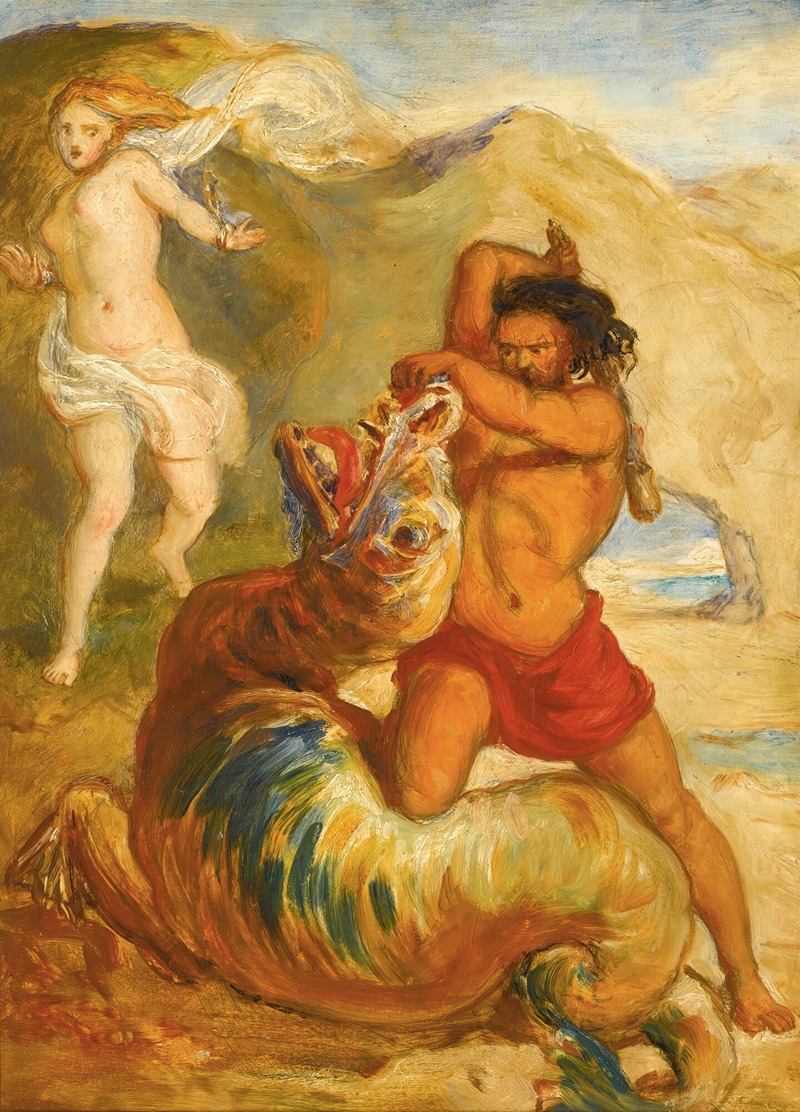
Perseus saving Andromeda
A hand-painted replica of Sir John Everett Millais’s masterpiece Perseus saving Andromeda, meticulously crafted by professional artists to capture the true essence of the original. Each piece is created with museum-quality canvas and rare mineral pigments, carefully painted by experienced artists with delicate brushstrokes and rich, layered colors to perfectly recreate the texture of the original artwork. Unlike machine-printed reproductions, this hand-painted version brings the painting to life, infused with the artist’s emotions and skill in every stroke. Whether for personal collection or home decoration, it instantly elevates the artistic atmosphere of any space.
Perseus Saving Andromeda is a painting by the British artist Sir John Everett Millais, completed in 1876. Millais was a prominent figure in the Pre-Raphaelite Brotherhood, a movement he co-founded in 1848 that sought to return to the detailed, vibrant, and symbolic style of art that preceded the High Renaissance. However, by the time he painted Perseus Saving Andromeda, Millais had largely moved away from the Pre-Raphaelite style, adopting a more academic and traditional approach to his work.
The painting depicts a scene from Greek mythology, specifically the story of Perseus and Andromeda. According to the myth, Andromeda, the daughter of Cepheus and Cassiopeia, was chained to a rock as a sacrifice to a sea monster sent by Poseidon. Perseus, the hero who had recently slain Medusa, arrives to rescue her. In Millais's interpretation, Perseus is shown in the act of freeing Andromeda, with the severed head of Medusa visible in the composition, referencing the hero's earlier triumph.
Millais's Perseus Saving Andromeda reflects his interest in classical themes and his ability to convey drama and emotion through his work. The painting is notable for its detailed rendering of the human form and its use of light and color to create a sense of tension and movement. The figures of Perseus and Andromeda are central to the composition, with their poses and expressions emphasizing the peril and heroism of the moment.
The painting was exhibited at the Royal Academy in London in 1876, where it received mixed reviews. Some critics praised Millais's technical skill and the dramatic subject matter, while others found the work less compelling compared to his earlier Pre-Raphaelite pieces. Despite this, the painting remains an important example of Millais's later career and his engagement with mythological themes.
Today, Perseus Saving Andromeda is part of a private collection and is not on permanent public display. As a result, it is less well-known than some of Millais's other works, such as Ophelia or The Blind Girl. However, it continues to be studied as part of Millais's broader artistic legacy and his exploration of classical and literary subjects.





